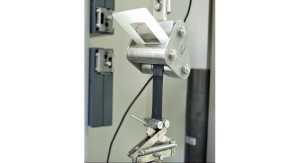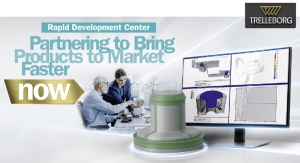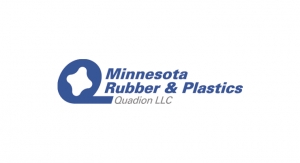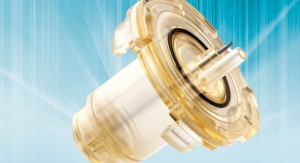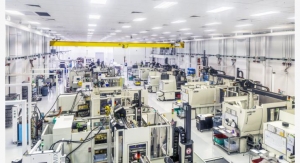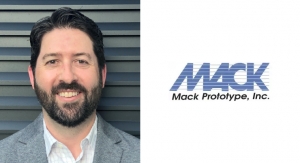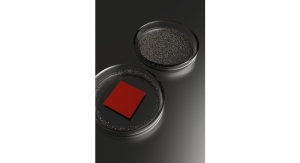Michael Barbella06.02.10
Modernizing Molding
Technological advancements to equipment and new ways of manufacturing tiny parts is keeping the molding industry on the cutting edge of innovation.
Charlie Chaplin was better known for his comedic genius than his idealistic wit. Yet some of his more serious one-liners seem as rational as those from an ancient Greek philosopher or famous author.
Consider his outlook on one of life’s most enduring constants: Nothing is permanent in this wicked world—not even our troubles. While Chaplin certainly was not the first to make such a statement about change (and he undoubtedly will not be the last), his viewpoint nonetheless still is relevant today.
It may be even more relevant in the medical device industry, which depends on the lack of permanence in order to survive. Most sectors within the industry (implants, electronics manufacturing and cardiology, among others) thrive on the changes to devices (and to a lesser extent, manufacturing processes) that result from technological advancements, revised international quality standards and innovative designs.
Other segments, however, flourish equally as well with an invariable set of tools and processes. Take molding, for instance. Molders have used the same basic principles for decades to make parts for medical devices, despite changes to the tools and machines used to make the mold.
“There’s quite a few similarities between molding 20 years ago and molding now,” said Chuck Philipp, vice president of Value Plastics Inc., a Fort Collins, Colo.-based company that designs and manufactures plastic tubing fittings and connectors. “Other than some advances that have been made in prototype tooling to help turn tooling around faster and to be able to make models and other items faster, there really hasn’t been a lot of advancements in terms of people coming up with new ways to mold a part. We’re still using molds that were made 20 years ago, and they operate as efficiently as some of the new molds that we’ve done in the past year. A lot of the molded parts that you see, whether it be an IV set or other device, have had changes and enhancements over the years to help improve performance but the molds that make those parts have not changed much. They’ve been quite consistent.”
A world of change, though, has taken place around that consistency. Decades of progress has led to hydraulic molding machines evolving to electronic versions; to robotics being incorporated into the manufacturing process; and to computer software upgrades that enable companies such as Value Plastics to electronically monitor molding production work from a central location within its manufacturing plant.
These advancements have helped revolutionize molding machines, turning them into a perfunctory extension of the workforce. Mold-making equipment has become so sophisticated that human interaction hardly seems necessary—machines are available that can conduct two-shot molding in the same mold as well as control the flow or temperature of the material being shaped. Some even can be programmed to automatically shut down in the event of an error.
“A lot of the technologies with molding equipment are designed to make the machines operate more on their own without having to have humans stand over them,” Philipp explained. “In our case we include robotics with every molding machine as well and the robots are getting more complex in terms of what they are able to do. The robots either pick the plastic part out of the mold or pick out excess plastic material and put it into a waste area. We also incorporate a software system that allows us from a computer station to monitor all the molds in our production area without actually having to be in the room with the mold. If a mold has a problem or finishes its job, someone in a different part of our building can see that and attend to that particular machine.”
Such a Big Brother-type monitoring system, according to Philipp, helps the company improve its efficiency and maximize machines’ “run times.” It also allows the company to reduce the total amount of labor needed to produce a molded part.
A similar philosophy was behind the implementation of technology derived from facial recognition software at MTD Micro Molding, a provider of mold-making and micromolding services in Charlton, Mass. Every part that is manufactured by the company has a picture associated with it, and that picture is “read” by the computer program inside the company’s molding machines to ensure the proper parts are being made. The software stores a picture and up to 40 different process parameters associated with the given cycle.
In addition to the facial recognition software in its molding equipment, MTD Micro has a machine that can create 3-D rich features into molds that are invisible to the naked eye. Its Sarix 3D EDM (electrical discharge machining) milling machine is capable of milling shapes with a radius corner of three microns and producing smaller, deeper and more precise perfect round holes, according to literature from the machine’s Swiss manufacturer, Sarix SA. MTD Micro is one of only two companies in the United States that have a Sarix 3D EDM milling machine.
“This machine can put a radius on a product that is essentially immeasurable,” said Brian Matachun, MTD sales manager. “The machine sweeps across a tool path and after it completes that sweep it steps down half a micron. It offers a lot of capabilities in terms of crisp details for medical components and microfluidic applications—features that are just unbelievable. As products become more complex and people are trying to do more, they want a product that is smaller. If it’s an entire device, they want that device to be smaller but also perform more functions, too.”
No Small Demand
Shrinking medical components (and sometimes the devices themselves) to a fraction of what they used to be requires molders to keep pace with miniaturization, adopt micromolding techniques, and develop special tools to make the parts. Applications for micromolded parts vary from ophthalmic, cardiac rhythm management, and audiologic components to short- and long-term implantable applications. They also are used in medical equipment that requires extremely small, precise components for external devices.
Micromolding—defined as an injection molding process where the manufactured components require magnification to see product details contained on or within the part—continues to be among the most prominent trends in the device industry, experts told Medical Product Outsourcing. The rise in demand for such tiny, tight-tolerance parts though, has proven to be both a blessing and a curse: Naturally, companies that offer micromolding services such as MTD Medical, Rapidwerks Inc. and Saint Gobain Performance Plastics Corporation welcome the additional business. But the prevalence of these components (as well as the potential for hefty profits) also attracts companies that may not have the knowledge or be equipped to properly manufacture minute parts for medical products.
Traditional injection molding machines cannot mold miniature parts, industry experts said. Companies that use tools made for larger molding machines are destined to fail when they attempt to micromold a part.
“Micromolding is a different animal,” Matachun said. “The micromolding world has a different approach to molding altogether. The first thing we ask all of our clients is whether or not they have ever done a micro component before. We then explain to them that this journey is going to be a lot different than making a large part. In making a micro component, most people go to their internal resources initially and ask whether it can be done, and the materials people may say ‘that will never be done.’ So you get a false negative. In the worst case scenario, they get a false positive where the client’s resource pool says ‘yes, you can do that, but call this vendor of the material and he can give you some insight.’ The problem with that is not everybody has data on materials below 40-thousandths of an inch from a flow perspective. So what happens? They try to micromold a component and they falter. As an industry leader, we must always continue to educate our clients and stress that the proper partnership is essential to micromolding success.”
Receiving false positives and negatives, however, are not the only ways traditional molders falter in their pursuit of micromolded parts. Using the wrong type of equipment or tooling also can trip them up, leading to inconsistent part weights, short shots, resonance problems, yield issues, excessive material waste and parting-line flash, experts said. Other problems include material plasticizing (often called plastification) and melt homogenization.
Traditional molders also may have trouble injecting the right amount of material into a mold cavity with extremely tight or close tolerances. A mistake at this point in the mold-making process can cause inconsistent or non-reproducible shot sizes as well as material freezing or degradation, melt homogenization, and problems with static electricity, experts noted.
The challenges of creating diminutive components with even more-diminutive features can be daunting due to the precision involved in molding a miniature part. As one device executive put it, “You’ve got to be on top of your game every day.”
For companies at the top of their games, the possibilities in the micromolding realm are endless. Some of the more promising (and potentially profitable) trends in this sector include micromolding products made with bioresorbable/bioabsorbable materials (thanks to the growing number of non-invasive surgical techniques), and microfluidics.
As its name implies, microfluidics focuses on the behavior, precise control and manipulation of tiny bits of fluid, usually measured in infinitesimal amounts such as microliters, according to industry data. For context purposes, about 25 microliters can fit into a single drop of water.
Still a fairly new field—existing for only a few decades—microfluidics has been used mostly to develop products such as ink-jet printers. But researchers are discovering new applications for this field, particularly in areas such as biology and chemistry. Some of the promising future uses for fluidics include real-time warning systems that reveal the presence of biochemical toxins, and blood screenings that can detect potentially life-threatening diseases, experts said.
Several micromolding techniques can be used to manufacture microfluidic devices from polymers. One of the most cost effective for companies is micro-injection molding, a process that has mass-production capabilities, short cycle times, accurate replication and dimensional control, and the potential for full automation. In addition, knowledge of the process and the steps involved in manufacturing an injection-molded part transfer well between the micro and conventional arenas.
Executives at Saint Gobain Performance Plastics Corp. certainly can attest to the transferability between processes. The polymer product manufacturer has been using its liquid injection micromolding process to make silicone products, some of which are replacing existing goods once made from thermoplastic materials. The company can manufacture silicone components as small as ±0.001 inches for drug delivery applications, vascular devices, catheter components, IV therapy, and minimally invasive surgical procedures such as laparoscopy, thoracoscopy, and ophthalmology.
While silicone has become a popular choice among molders in both the micro and traditional molding markets, industry experts predict it will play a more important role in the future as trends shift from the assembly of two separate components to the creation of a single smaller part in which silicone is overmolded on a rigid substrate.
“Many molding companies have added capabilities such as liquid injection molding and micro molding,” noted Chetan N. Patel, founder and CEO of SMC Ltd., a Somerset, Wis.-based contract manufacturing firm that offers design and molding services. “Although these technologies are important, the future is going to be customized solutions with processes that do not exist today.”
Until then, companies will have to rely on customized solutions that already exist, such as nanomolding and specialty resins that convert metal components into plastic.
Nanomolded parts usually are measured in cubic millimeters. One company, Medical Murray Inc. of North Barrington, Ill., is already designing such microscopic parts. The firm has a nanomolding machine called the Sesame that can hold low volumes of melted material and offers controlled high speed and high pressure injection capabilities. The machine, according to company literature, can make submicromolded-size parts with complex geometric features from materials such as bioabsorbable polymers that would disintegrate in standard equipment. The Sesame can be used to make insert-molded devices that require tiny, integrated features for such applications as overmolded polymers, electronics, and radiopaque markers.
Other Priorities: Turnaround Times, Process Validations
Many of the outside influences currently affecting molders have remained unchanged over the last few years: cost pressures, time to market, quality management and federal regulatory requirements.
“Many medical customers are outsourcing due to cost pressures,” said William Tang, general manager at Meiban Micro Pte Ltd., a Singapore-based company that specializes in precision and medical molds as well as molding. “This is supported by the trend that medical molding is gradually gaining a lot of ground in Asia where cost is generally much lower than that in the United States and Europe. Another trend that we see is the pressure on time to market. This is traditionally not such a big concern in the medical device industry. However, in certain segments, competition is getting tough and customers require very good turnaround in prototype tooling as well as production tooling to shorten the time to market. This is where molding companies must be willing to invest in time and resources to work with customers on product development programs. They should also develop competencies to be able to add value in the product development phase.”
While compliance with U.S. Food and Drug Administration (FDA) regulations always is a concern for molding companies, the agency’s recent focus on supplier quality and the device approval process has prompted many OEMs to look at their outsourcing partners with a more critical eye.
At Phillips Plastics Corp., that critical eye (from both the FDA and OEMs) has beget more documentation on validations of molding and assembly processes as well as tooling inspections, said Dave Thoreson, general manager of the Phillips Medical division of Menomonie, Wis.-based Phillips Plastics. “There’s definitely a greater involvement from the FDA which is requiring more stringent validations around some of the components,” he noted.
Validations have become a central focus at Vesta Inc. as well, though customers also have become more interested in the company’s continuous improvement programs. Besides incorporating Six Sigma principles in its daily operation, the Somerset, Wis.-based firm offers customers a process validation system that includes design reviews, the establishment of process parameters, tooling validation, prototyping, testing and inspection. Vesta’s quality management system is compliant to QSR 21 CFR Part 820 and uses industry-standard population statistics, hi/lo grouping, pass/fail and capability methods.
“It used to be just build to print,” explained Buddie Lusterio, vice president of engineering for Vesta, a contract manufacturing firm that provides design, molding, extrusion and assembly services. “Now your process has to be a validated one. There’s a huge focus on first-time quality. Customers are looking at what our company offers in terms of continuous improvement plans, what [quality] systems we have in place and what metrics we utilize to make sure we are continuously improving. It’s not just a customer auditing you and asking if you have these things. The bigger medical manufacturers that we supply have specific metrics in their scorecard that measure the different levels of continuous improvement programs. These metrics can be Lean manufacturing methodologies that are utilized, and they can go so far as asking what level of Lean education your staff has by inquiring how many Six Sigma black belts or Six Sigma green belts are on staff. Customers are also inquiring about cost avoidance programs that we plan to put in place if we were to provide them the products they are asking us to quote.”
The More Services, the Better
The focus on quality systems and the constant quest to reduce manufacturing costs has led many medical device firms to become more vertically integrated in order to reduce their overall supply chain expenses, experts told MPO. Such integration is essential for survival, particularly since OEMs have been consolidating their vendor lists in an effort to reduce costs and better manage suppliers.
“These days, OEMs don’t want to work with five suppliers, each specializing in one or two technologies,” SMC’s Patel said. “The risk to the supply chain as well as the difficulty and time of doing business, is too great. Customers are looking for an extension to their company, a partner with an integrated supply chain and global solutions. They want suppliers to become the experts on the manufacturing of their device and figure out manufacturing solutions for their products.”
Some of the manufacturing solutions provided by Phillips Plastics as a result of this push toward full-service offerings includes services from design through commercialization, Thoreson noted, adding the company has transitioned over the last five to six years from being a “custom injection molder to being a custom injection molder that does contract manufacturing of finished medical devices and drug delivery systems.”
Pacific Plastics & Engineering finds itself in a similar position. Executives at the Soquel, Calif.-based firm have noticed customer requests for more offerings such as additional technical help in the design phase of a project as well as assistance with supporting documentation for final designs. Pacific Plastics provides molded plastics and injection molds for medical devices and biotech products. Its clients include Boston Scientific, Johnson & Johnson and Tyco Healthcare.
“We always have different requests coming in but we have been asked recently to add more offerings,” said Tom Star, sales director. “We currently offer molding, assembly, design services, and other secondary operations. However, we are being asked for more technical support regarding design help up front and at no cost. We have developed more automation of systems and increased the total service offering to match all the needs of a developing company. In the past, we were primarily just an injection molder but the effort to reduce costs has inevitably led firms to be more vertically integrated in order to reduce supply chain costs overall.”
Bigger isn’t always better, particularly in the medical device world. The drive toward less invasive and less damaging medical procedures as well as convenience and ease of use is driving the quest for device miniaturization in the industry. Along with that desire for smaller devices, though, comes an equally important need to make parts that fit inside these miniscule medical marvels. Technological advances and innovative designs have led molders to develop new techniques that will help fulfill market demand for molecular-sized parts. Some of these techniques, such as microfluidics and nanomolding, are already being applied in diagnostics and clinical therapies.
However, cost pressures, skyrocketing resin prices and increased scrutiny from the FDA is making the development of these techniques challenging. Adding to these challenges is the perpetual demand among OEMs and outsourcing partners for a full complement of services. Industry professionals expect this trend to continue for the foreseeable future, as companies attempt to compensate for decreasing reimbursement levels with cost-cutting measures in the manufacturing process.
Assimilating services between the OEM and contract manufacturer, however, will most likely be challenging. Predicts SMC’s Patel: “The future in manufacturing is going to be figuring out how to become fully integrated with the OEMs so the design-to-manufacturing process is seamless. An injection molder either becomes capable of full services including regulatory knowledge or becomes a supplier to the OEM’s preferred supply chain.”
Technological advancements to equipment and new ways of manufacturing tiny parts is keeping the molding industry on the cutting edge of innovation.
Charlie Chaplin was better known for his comedic genius than his idealistic wit. Yet some of his more serious one-liners seem as rational as those from an ancient Greek philosopher or famous author.
Cost pressures, time to market and compliance with U.S. Food and Drug Admnistration regulations are some of the challenges confronting molders. Photo courtesy of SMC Ltd. |
It may be even more relevant in the medical device industry, which depends on the lack of permanence in order to survive. Most sectors within the industry (implants, electronics manufacturing and cardiology, among others) thrive on the changes to devices (and to a lesser extent, manufacturing processes) that result from technological advancements, revised international quality standards and innovative designs.
Other segments, however, flourish equally as well with an invariable set of tools and processes. Take molding, for instance. Molders have used the same basic principles for decades to make parts for medical devices, despite changes to the tools and machines used to make the mold.
“There’s quite a few similarities between molding 20 years ago and molding now,” said Chuck Philipp, vice president of Value Plastics Inc., a Fort Collins, Colo.-based company that designs and manufactures plastic tubing fittings and connectors. “Other than some advances that have been made in prototype tooling to help turn tooling around faster and to be able to make models and other items faster, there really hasn’t been a lot of advancements in terms of people coming up with new ways to mold a part. We’re still using molds that were made 20 years ago, and they operate as efficiently as some of the new molds that we’ve done in the past year. A lot of the molded parts that you see, whether it be an IV set or other device, have had changes and enhancements over the years to help improve performance but the molds that make those parts have not changed much. They’ve been quite consistent.”
A world of change, though, has taken place around that consistency. Decades of progress has led to hydraulic molding machines evolving to electronic versions; to robotics being incorporated into the manufacturing process; and to computer software upgrades that enable companies such as Value Plastics to electronically monitor molding production work from a central location within its manufacturing plant.
These advancements have helped revolutionize molding machines, turning them into a perfunctory extension of the workforce. Mold-making equipment has become so sophisticated that human interaction hardly seems necessary—machines are available that can conduct two-shot molding in the same mold as well as control the flow or temperature of the material being shaped. Some even can be programmed to automatically shut down in the event of an error.
“A lot of the technologies with molding equipment are designed to make the machines operate more on their own without having to have humans stand over them,” Philipp explained. “In our case we include robotics with every molding machine as well and the robots are getting more complex in terms of what they are able to do. The robots either pick the plastic part out of the mold or pick out excess plastic material and put it into a waste area. We also incorporate a software system that allows us from a computer station to monitor all the molds in our production area without actually having to be in the room with the mold. If a mold has a problem or finishes its job, someone in a different part of our building can see that and attend to that particular machine.”
Such a Big Brother-type monitoring system, according to Philipp, helps the company improve its efficiency and maximize machines’ “run times.” It also allows the company to reduce the total amount of labor needed to produce a molded part.
A similar philosophy was behind the implementation of technology derived from facial recognition software at MTD Micro Molding, a provider of mold-making and micromolding services in Charlton, Mass. Every part that is manufactured by the company has a picture associated with it, and that picture is “read” by the computer program inside the company’s molding machines to ensure the proper parts are being made. The software stores a picture and up to 40 different process parameters associated with the given cycle.
In addition to the facial recognition software in its molding equipment, MTD Micro has a machine that can create 3-D rich features into molds that are invisible to the naked eye. Its Sarix 3D EDM (electrical discharge machining) milling machine is capable of milling shapes with a radius corner of three microns and producing smaller, deeper and more precise perfect round holes, according to literature from the machine’s Swiss manufacturer, Sarix SA. MTD Micro is one of only two companies in the United States that have a Sarix 3D EDM milling machine.
“This machine can put a radius on a product that is essentially immeasurable,” said Brian Matachun, MTD sales manager. “The machine sweeps across a tool path and after it completes that sweep it steps down half a micron. It offers a lot of capabilities in terms of crisp details for medical components and microfluidic applications—features that are just unbelievable. As products become more complex and people are trying to do more, they want a product that is smaller. If it’s an entire device, they want that device to be smaller but also perform more functions, too.”
No Small Demand
Shrinking medical components (and sometimes the devices themselves) to a fraction of what they used to be requires molders to keep pace with miniaturization, adopt micromolding techniques, and develop special tools to make the parts. Applications for micromolded parts vary from ophthalmic, cardiac rhythm management, and audiologic components to short- and long-term implantable applications. They also are used in medical equipment that requires extremely small, precise components for external devices.
Micromolding—defined as an injection molding process where the manufactured components require magnification to see product details contained on or within the part—continues to be among the most prominent trends in the device industry, experts told Medical Product Outsourcing. The rise in demand for such tiny, tight-tolerance parts though, has proven to be both a blessing and a curse: Naturally, companies that offer micromolding services such as MTD Medical, Rapidwerks Inc. and Saint Gobain Performance Plastics Corporation welcome the additional business. But the prevalence of these components (as well as the potential for hefty profits) also attracts companies that may not have the knowledge or be equipped to properly manufacture minute parts for medical products.
Traditional injection molding machines cannot mold miniature parts, industry experts said. Companies that use tools made for larger molding machines are destined to fail when they attempt to micromold a part.
“Micromolding is a different animal,” Matachun said. “The micromolding world has a different approach to molding altogether. The first thing we ask all of our clients is whether or not they have ever done a micro component before. We then explain to them that this journey is going to be a lot different than making a large part. In making a micro component, most people go to their internal resources initially and ask whether it can be done, and the materials people may say ‘that will never be done.’ So you get a false negative. In the worst case scenario, they get a false positive where the client’s resource pool says ‘yes, you can do that, but call this vendor of the material and he can give you some insight.’ The problem with that is not everybody has data on materials below 40-thousandths of an inch from a flow perspective. So what happens? They try to micromold a component and they falter. As an industry leader, we must always continue to educate our clients and stress that the proper partnership is essential to micromolding success.”
Receiving false positives and negatives, however, are not the only ways traditional molders falter in their pursuit of micromolded parts. Using the wrong type of equipment or tooling also can trip them up, leading to inconsistent part weights, short shots, resonance problems, yield issues, excessive material waste and parting-line flash, experts said. Other problems include material plasticizing (often called plastification) and melt homogenization.
Traditional molders also may have trouble injecting the right amount of material into a mold cavity with extremely tight or close tolerances. A mistake at this point in the mold-making process can cause inconsistent or non-reproducible shot sizes as well as material freezing or degradation, melt homogenization, and problems with static electricity, experts noted.
The challenges of creating diminutive components with even more-diminutive features can be daunting due to the precision involved in molding a miniature part. As one device executive put it, “You’ve got to be on top of your game every day.”
For companies at the top of their games, the possibilities in the micromolding realm are endless. Some of the more promising (and potentially profitable) trends in this sector include micromolding products made with bioresorbable/bioabsorbable materials (thanks to the growing number of non-invasive surgical techniques), and microfluidics.
As its name implies, microfluidics focuses on the behavior, precise control and manipulation of tiny bits of fluid, usually measured in infinitesimal amounts such as microliters, according to industry data. For context purposes, about 25 microliters can fit into a single drop of water.
Still a fairly new field—existing for only a few decades—microfluidics has been used mostly to develop products such as ink-jet printers. But researchers are discovering new applications for this field, particularly in areas such as biology and chemistry. Some of the promising future uses for fluidics include real-time warning systems that reveal the presence of biochemical toxins, and blood screenings that can detect potentially life-threatening diseases, experts said.
Several micromolding techniques can be used to manufacture microfluidic devices from polymers. One of the most cost effective for companies is micro-injection molding, a process that has mass-production capabilities, short cycle times, accurate replication and dimensional control, and the potential for full automation. In addition, knowledge of the process and the steps involved in manufacturing an injection-molded part transfer well between the micro and conventional arenas.
Executives at Saint Gobain Performance Plastics Corp. certainly can attest to the transferability between processes. The polymer product manufacturer has been using its liquid injection micromolding process to make silicone products, some of which are replacing existing goods once made from thermoplastic materials. The company can manufacture silicone components as small as ±0.001 inches for drug delivery applications, vascular devices, catheter components, IV therapy, and minimally invasive surgical procedures such as laparoscopy, thoracoscopy, and ophthalmology.
While silicone has become a popular choice among molders in both the micro and traditional molding markets, industry experts predict it will play a more important role in the future as trends shift from the assembly of two separate components to the creation of a single smaller part in which silicone is overmolded on a rigid substrate.
“Many molding companies have added capabilities such as liquid injection molding and micro molding,” noted Chetan N. Patel, founder and CEO of SMC Ltd., a Somerset, Wis.-based contract manufacturing firm that offers design and molding services. “Although these technologies are important, the future is going to be customized solutions with processes that do not exist today.”
Until then, companies will have to rely on customized solutions that already exist, such as nanomolding and specialty resins that convert metal components into plastic.
Nanomolded parts usually are measured in cubic millimeters. One company, Medical Murray Inc. of North Barrington, Ill., is already designing such microscopic parts. The firm has a nanomolding machine called the Sesame that can hold low volumes of melted material and offers controlled high speed and high pressure injection capabilities. The machine, according to company literature, can make submicromolded-size parts with complex geometric features from materials such as bioabsorbable polymers that would disintegrate in standard equipment. The Sesame can be used to make insert-molded devices that require tiny, integrated features for such applications as overmolded polymers, electronics, and radiopaque markers.
Other Priorities: Turnaround Times, Process Validations
Many of the outside influences currently affecting molders have remained unchanged over the last few years: cost pressures, time to market, quality management and federal regulatory requirements.
“Many medical customers are outsourcing due to cost pressures,” said William Tang, general manager at Meiban Micro Pte Ltd., a Singapore-based company that specializes in precision and medical molds as well as molding. “This is supported by the trend that medical molding is gradually gaining a lot of ground in Asia where cost is generally much lower than that in the United States and Europe. Another trend that we see is the pressure on time to market. This is traditionally not such a big concern in the medical device industry. However, in certain segments, competition is getting tough and customers require very good turnaround in prototype tooling as well as production tooling to shorten the time to market. This is where molding companies must be willing to invest in time and resources to work with customers on product development programs. They should also develop competencies to be able to add value in the product development phase.”
While compliance with U.S. Food and Drug Administration (FDA) regulations always is a concern for molding companies, the agency’s recent focus on supplier quality and the device approval process has prompted many OEMs to look at their outsourcing partners with a more critical eye.
At Phillips Plastics Corp., that critical eye (from both the FDA and OEMs) has beget more documentation on validations of molding and assembly processes as well as tooling inspections, said Dave Thoreson, general manager of the Phillips Medical division of Menomonie, Wis.-based Phillips Plastics. “There’s definitely a greater involvement from the FDA which is requiring more stringent validations around some of the components,” he noted.
Validations have become a central focus at Vesta Inc. as well, though customers also have become more interested in the company’s continuous improvement programs. Besides incorporating Six Sigma principles in its daily operation, the Somerset, Wis.-based firm offers customers a process validation system that includes design reviews, the establishment of process parameters, tooling validation, prototyping, testing and inspection. Vesta’s quality management system is compliant to QSR 21 CFR Part 820 and uses industry-standard population statistics, hi/lo grouping, pass/fail and capability methods.
“It used to be just build to print,” explained Buddie Lusterio, vice president of engineering for Vesta, a contract manufacturing firm that provides design, molding, extrusion and assembly services. “Now your process has to be a validated one. There’s a huge focus on first-time quality. Customers are looking at what our company offers in terms of continuous improvement plans, what [quality] systems we have in place and what metrics we utilize to make sure we are continuously improving. It’s not just a customer auditing you and asking if you have these things. The bigger medical manufacturers that we supply have specific metrics in their scorecard that measure the different levels of continuous improvement programs. These metrics can be Lean manufacturing methodologies that are utilized, and they can go so far as asking what level of Lean education your staff has by inquiring how many Six Sigma black belts or Six Sigma green belts are on staff. Customers are also inquiring about cost avoidance programs that we plan to put in place if we were to provide them the products they are asking us to quote.”
The More Services, the Better
The focus on quality systems and the constant quest to reduce manufacturing costs has led many medical device firms to become more vertically integrated in order to reduce their overall supply chain expenses, experts told MPO. Such integration is essential for survival, particularly since OEMs have been consolidating their vendor lists in an effort to reduce costs and better manage suppliers.
“These days, OEMs don’t want to work with five suppliers, each specializing in one or two technologies,” SMC’s Patel said. “The risk to the supply chain as well as the difficulty and time of doing business, is too great. Customers are looking for an extension to their company, a partner with an integrated supply chain and global solutions. They want suppliers to become the experts on the manufacturing of their device and figure out manufacturing solutions for their products.”
Some of the manufacturing solutions provided by Phillips Plastics as a result of this push toward full-service offerings includes services from design through commercialization, Thoreson noted, adding the company has transitioned over the last five to six years from being a “custom injection molder to being a custom injection molder that does contract manufacturing of finished medical devices and drug delivery systems.”
Pacific Plastics & Engineering finds itself in a similar position. Executives at the Soquel, Calif.-based firm have noticed customer requests for more offerings such as additional technical help in the design phase of a project as well as assistance with supporting documentation for final designs. Pacific Plastics provides molded plastics and injection molds for medical devices and biotech products. Its clients include Boston Scientific, Johnson & Johnson and Tyco Healthcare.
“We always have different requests coming in but we have been asked recently to add more offerings,” said Tom Star, sales director. “We currently offer molding, assembly, design services, and other secondary operations. However, we are being asked for more technical support regarding design help up front and at no cost. We have developed more automation of systems and increased the total service offering to match all the needs of a developing company. In the past, we were primarily just an injection molder but the effort to reduce costs has inevitably led firms to be more vertically integrated in order to reduce supply chain costs overall.”
Bigger isn’t always better, particularly in the medical device world. The drive toward less invasive and less damaging medical procedures as well as convenience and ease of use is driving the quest for device miniaturization in the industry. Along with that desire for smaller devices, though, comes an equally important need to make parts that fit inside these miniscule medical marvels. Technological advances and innovative designs have led molders to develop new techniques that will help fulfill market demand for molecular-sized parts. Some of these techniques, such as microfluidics and nanomolding, are already being applied in diagnostics and clinical therapies.
However, cost pressures, skyrocketing resin prices and increased scrutiny from the FDA is making the development of these techniques challenging. Adding to these challenges is the perpetual demand among OEMs and outsourcing partners for a full complement of services. Industry professionals expect this trend to continue for the foreseeable future, as companies attempt to compensate for decreasing reimbursement levels with cost-cutting measures in the manufacturing process.
Assimilating services between the OEM and contract manufacturer, however, will most likely be challenging. Predicts SMC’s Patel: “The future in manufacturing is going to be figuring out how to become fully integrated with the OEMs so the design-to-manufacturing process is seamless. An injection molder either becomes capable of full services including regulatory knowledge or becomes a supplier to the OEM’s preferred supply chain.”





